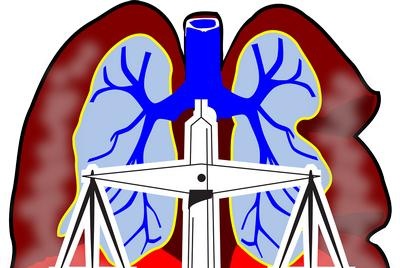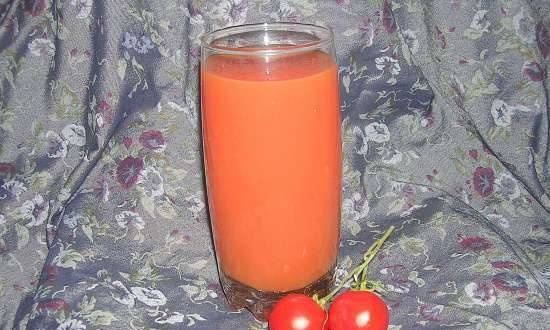|
 Air consists of gaseous components: nitrogen - 78.09%, oxygen - 20.95%, carbon dioxide - 0.03% and inert gases (helium, hydrogen, xenon, argon, krypton, neon, etc.), the amount of which so little that it has no practical value for human life. Air consists of gaseous components: nitrogen - 78.09%, oxygen - 20.95%, carbon dioxide - 0.03% and inert gases (helium, hydrogen, xenon, argon, krypton, neon, etc.), the amount of which so little that it has no practical value for human life.
Oxygen is a gas without which the existence of life on Earth would be impossible. There are almost no reserves of it in the body. If without food a person can live up to 40 days, without water - up to 6 days, then without oxygen - less than 6 minutes.
Air exerts pressure on the surface of the Earth. In middle latitudes, at sea level, it is 760 mm Hg. Art. or 16.5 tons. We do not experience unpleasant sensations from this monstrous weight because it is balanced by the elasticity of our tissues.
As you rise to altitude, the air pressure decreases by 1 mm Hg every 10 meters. Art. At an altitude of 3-4 thousand meters, the pressure decreases so much that it becomes life-threatening.
The percentage of individual gases in the total volume of air, both at sea level and at any altitude, remains always constant.
A cubic meter of air at the same pressure is 760 mm Hg. Art., but at different temperatures it weighs differently. That is why the frosty air is denser, "thicker". This, in part, explains the feeling of lightness when breathing dry, frosty air.
An average of 10 thousand liters of air passes through the lungs of a person per day. From this volume, the body consumes up to 300 liters of oxygen per day and emits about the same amount of carbon dioxide.
The main carrier of oxygen in the body is a special protein substance in conjunction with iron - hemoglobin, which is found in red blood corpuscles — erythrocytes; they determine the red color of the blood. The red blood cells in the body are constantly renewed. One erythrocyte lives in the body for up to three months.
The total surface of all erythrocytes in the body is about 3000-3820 square meters; it is 1500-2000 times the entire surface of the human body and 40-50 times the total surface of the pulmonary alveoli.
Under resting conditions, hemoglobin carries from the lungs to the tissues about 250 ml of oxygen per minute. Under the influence of physical activity, this amount can increase up to 2500 ml / min, which is on average 360-3600 liters of oxygen per day.
With each circulation of blood in the body, hemoglobin gives the tissues about 100-350 ml of oxygen.
The more complete, mature erythrocytes from the bone marrow enter the blood, the better the body is supplied with oxygen. Normally, there are 4-5 million in 1 ml of blood.
In 100 ml of blood, 21 ml of oxygen can dissolve.
The amount of air in 8 hours of work passes through the lungs as much as in 16 hours of rest.
The total surface of the pulmonary alveoli, actively participating in gas exchange, i.e., in the consumption of oxygen and the release of carbon dioxide, is about 60 and?. In the case of shallow breathing — frequent, with a small volume of inspiration — only 50%, that is, 30 m2 of active lung tissue, takes part in gas exchange. This is usually seen during a forced pose. For example, sitting at the table, standing at the machine, while playing ping-pong, riding bikedriving a car. On the contrary, during special breathing exercises, as well as during swimming, jogging, skiing, the respiratory surface of the lungs is almost all actively involved in gas exchange.
Oxygen from the air is consumed by the human body not only through the lungs, but also through the skin.
On average, a person consumes 1031 kg (more than a ton) of oxygen per year. Of these, in the summer - 24%, in the fall - 25%, in the winter - 26%, in the spring - 25%.
 Air is ionized, that is, it contains negatively and positively electrically charged particles (aeroions).The more negative, so-called lungs, air ions, the cleaner and more beneficial the air. In smoky, stuffy rooms, their number is very small and barely reaches 100 per cubic centimeter of air. Whereas outside the city in a forest, field, on the river bank, especially near waterfalls or fountains, their number is large and reaches 2-5 thousand per cubic centimeter of air and more, which determines its high healing properties. Air is ionized, that is, it contains negatively and positively electrically charged particles (aeroions).The more negative, so-called lungs, air ions, the cleaner and more beneficial the air. In smoky, stuffy rooms, their number is very small and barely reaches 100 per cubic centimeter of air. Whereas outside the city in a forest, field, on the river bank, especially near waterfalls or fountains, their number is large and reaches 2-5 thousand per cubic centimeter of air and more, which determines its high healing properties.
A person who is outside the city at a distance of up to 50 km from the industrial center inhales about 0.08 g of dry impurity in the form of dust contained in the air per day, and in the very center - up to 3 g, i.e. more than 30 times, including substances harmful to the body. The transition of oxygen in the lungs from air to blood will be the faster, the greater the difference in its pressures in the air and blood.
Air is a poor conductor of heat. Its thermal conductivity is more than 25 times lower than the thermal conductivity of water. Therefore, a comfortable warmth sensation of a naked person in the air is observed at a temperature of 22 - 23 °, while in water - at 34 - 36 °.
Heat transfer to the surrounding air space goes along two main paths: through the skin - 80%; through the lungs - 20%.
Inadequate cooling of the lungs when breathing warm, moist air has an adverse effect on the entire body.
In rooms where a lot of people gather, for example in cinemas, the air contains an increased amount of gases excreted from the body, which, dissolving in droplets of moisture, can serve as a breeding ground for microbes.
For an hour in the open air at a temperature of + 12 °, a naked person loses up to 100 kcal of heat. In water with the same temperature, it loses the same amount in 4 minutes, that is, 15 times faster.
Human skin is equipped with a large number of small and smallest blood vessels (capillaries). When they expand, the vascular bed can accommodate up to 1/3 of all blood circulating in the body.
By influencing the skin with air or water procedures, it is possible to influence the distribution of blood in the body. This is one of the features of hardening.
Kramskikh V. Ya. - Air hardens and heals
|
 Air consists of gaseous components: nitrogen - 78.09%, oxygen - 20.95%, carbon dioxide - 0.03% and inert gases (helium, hydrogen, xenon, argon, krypton, neon, etc.), the amount of which so little that it has no practical value for human life.
Air consists of gaseous components: nitrogen - 78.09%, oxygen - 20.95%, carbon dioxide - 0.03% and inert gases (helium, hydrogen, xenon, argon, krypton, neon, etc.), the amount of which so little that it has no practical value for human life. Air is ionized, that is, it contains negatively and positively electrically charged particles (aeroions).The more negative, so-called lungs, air ions, the cleaner and more beneficial the air. In smoky, stuffy rooms, their number is very small and barely reaches 100 per cubic centimeter of air. Whereas outside the city in a forest, field, on the river bank, especially near waterfalls or fountains, their number is large and reaches 2-5 thousand per cubic centimeter of air and more, which determines its high healing properties.
Air is ionized, that is, it contains negatively and positively electrically charged particles (aeroions).The more negative, so-called lungs, air ions, the cleaner and more beneficial the air. In smoky, stuffy rooms, their number is very small and barely reaches 100 per cubic centimeter of air. Whereas outside the city in a forest, field, on the river bank, especially near waterfalls or fountains, their number is large and reaches 2-5 thousand per cubic centimeter of air and more, which determines its high healing properties.







